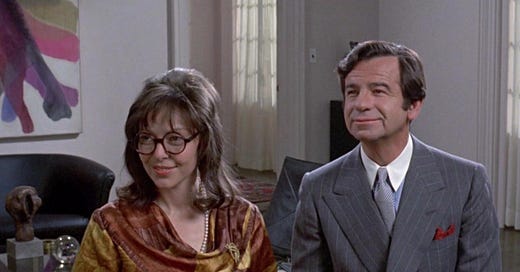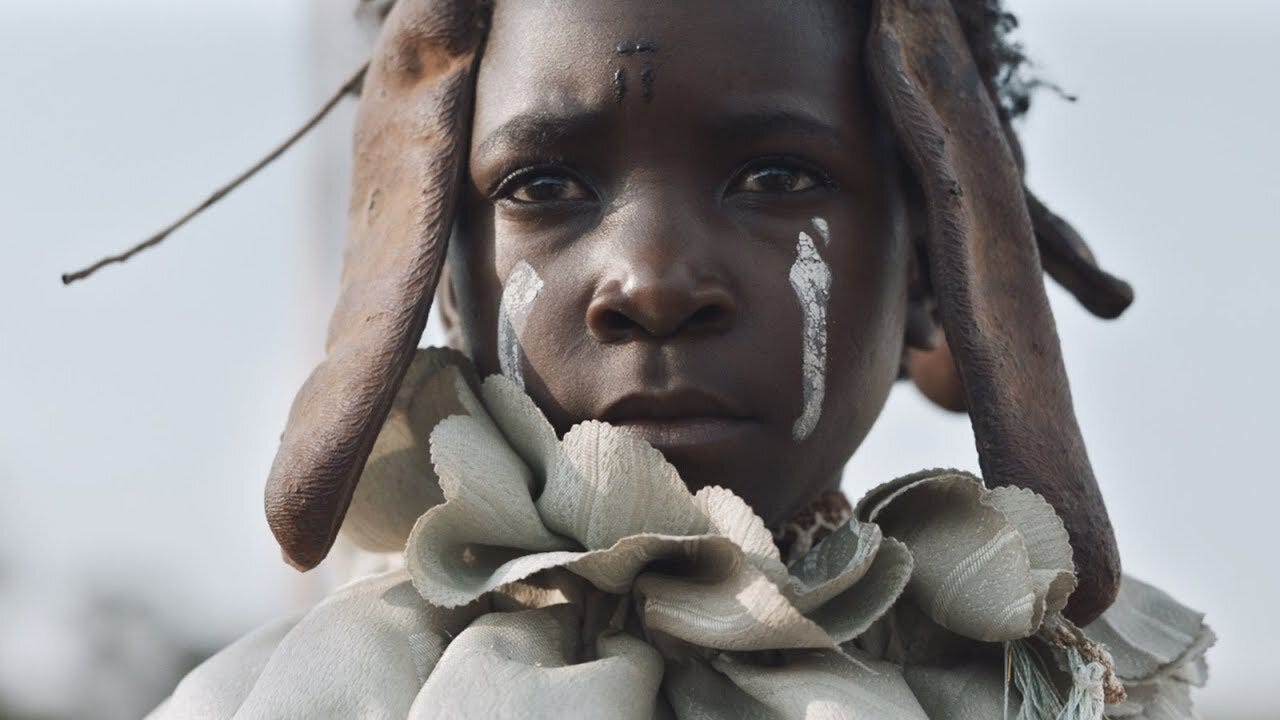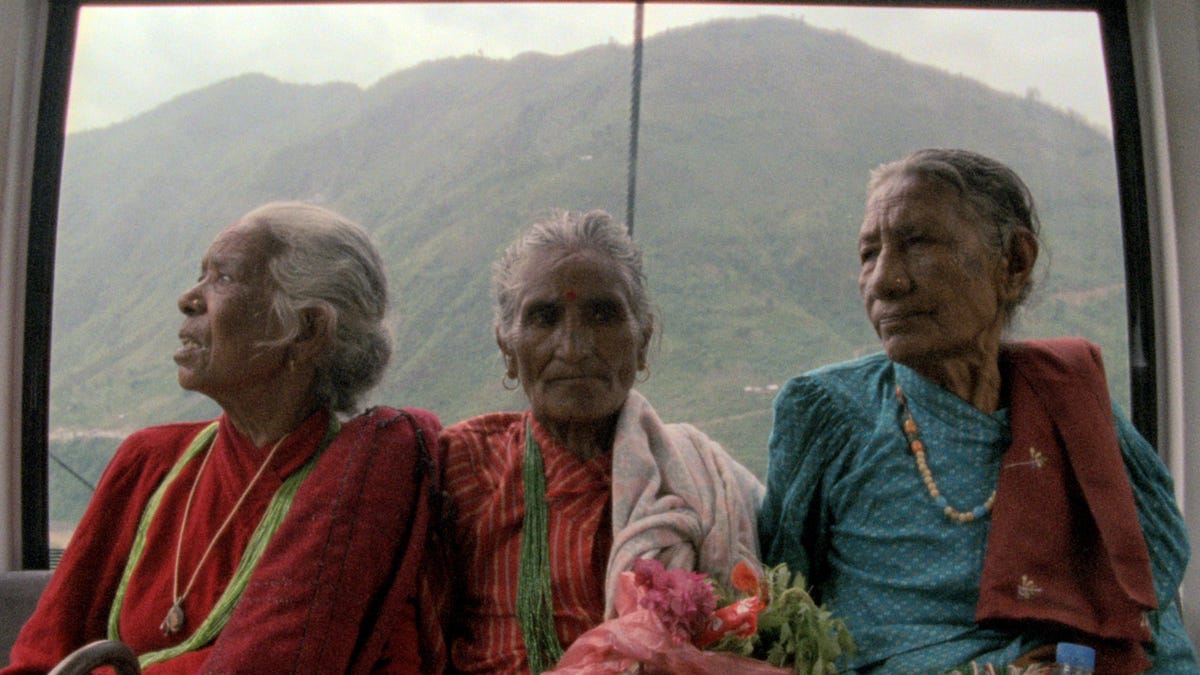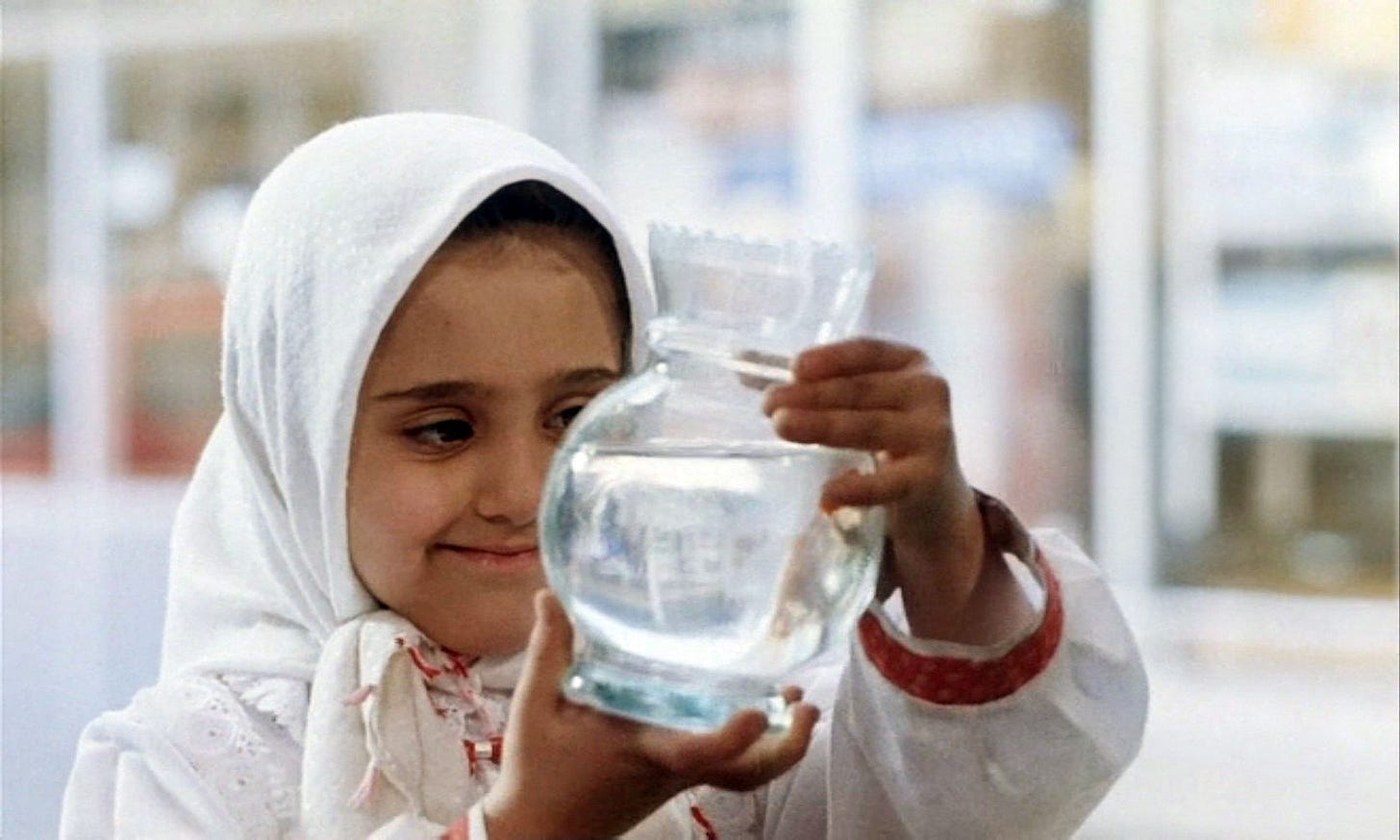I try watching a wide variety of films, leading me to see films that not many people have watched. Here are films from my watches in the previous month that I think more people should add to their watchlist.
A New Leaf (1971) - Directed by Elaine May
Elaine May’s 1971 masterpiece A New Leaf is a film that I have been told for months that I would love. Adapted from the short story “The Green Heart” by Jack Ritchie, the film is the story of Henry Graham, played brilliantly by Walter Matthau, a man whose entire identity is based around living lavishly. He is however out of money to live this expensive lifestyle, and must marry rich quickly or be doomed to a life of buying off-the-rack suits. However, Henry has absolutely no desire to share this wealth he will acquire from the marriage with anyone, so he deigns to marry a woman and then murder her, living off whatever fortune she leaves him. His target? A frumpy botanist named Henrietta Lowell, played by May herself. Their courtship and subsequent marriage is equal parts hilarious and sinister. May’s script is simply one of the best comedic scripts I’ve ever seen. While reading about the film in preparation of this article I found myself laughing out loud at multiple quotes from the film, even though I watched it weeks ago. However, Henry’s plan to murder Henrietta haunts the union. He sees her not as a person but as a means to maintain the lifestyle he cannot fathom losing. The conflict of the film therefore differs from most romantic comedies: will Henrietta survive and be none the wiser to Henry’s plans, or will he succeed and emerge victorious with her wealth? This is further enhanced by the fact that neither character really seems to know what to do with a romantic partner. Henry seems more interested in fine wine and the maintenance on his Ferrari, while Henrietta is obsessed with ferns. We never see the characters kiss much less actually share a bed, and I found myself wondering if the characters would be considered asexual like me in the modern day. The film was May’s directorial debut, and she admits in an interview with TCM that she had no idea how to direct or edit a film. There is a famed three hour cut of the film, that included Henry murdering two other characters, but this is likely lost to time, as the studio took final cut control from May. It therefore feels like a miracle that the film we do have, in its neutered form from the director’s original vision, is an utter delight. As Roger Ebert described in his review upon the film’s initial release, A New Leaf is “hilarious, and cockeyed, and warm”. I found myself giggling to myself throughout the film in my bedroom, and I yearn to see A New Leaf in a theater someday to just hear waves of laughter wash over the crowd.
A New Leaf is available to stream on Kanopy. It is also available to buy or rent on demand.
I Am Not A Witch (2017) - Directed by Rungano Nyoni
From Zambian-Welsh director Rungano Nyoni, I’m Not A Witch is a sobering depiction of the real-world exploitation of women and children in some African nations. The film tells the story of Shula, a young girl who appears in a village from parts unknown and is immediately accused of being a witch. She is offered the choice of dying or going to a witch camp, and of course chooses the witch camp. Shula’s journey is a darkly comic fairy tale. She is tasked with predicting the weather and bringing rain, and then is reprimanded when she cannot complete these impossible tasks. I know this is a very dark description, but I did sincerely laugh several times watching this. As Nyoni says in an interview, “Zambian humor…it looks like a very cruel sort of humor”. The humor does ebb away as the film goes on, and Shula’s predicament becomes more and more dire and feels increasingly impossible to escape. The witch camp depicted in the film is based on reality, with Nyoni having visited a Ghanaian witch camp during her research for the film, but aspects of it are exaggerated to drive home the film’s message. Shula and the other witches, mostly older women, are tied by long ribbons attached to absurdly large spools. In reality, these visual ties to the witch camps are instead “magic potions” or an invisible shrine that “only a witch doctor can see”, as Nyoni further stated in the aforementioned interview. Nyoni’s filmography as a whole, which has continued with the recent release of On Becoming a Guinea Fowl, focuses on the exploitation of women and children in her native Zambia and surrounding nations. Coming from a Western perspective, these films present an entirely new view of the world to me, laden with history and culture that I have no familiarity with. The films feel like laments, for something to be done, for freedom to be achieved.
I Am Not A Witch is available to stream on Mubi, Kanopy, PlutoTV, Tubi, and Plex. It is also available to buy or rent on demand.
Manakamana (2013) - Directed by Stephanie Spray & Pacho Velez
When I first started watching Manakamana, I was shocked by how long the opening shot was. With the editing being cleverly hidden by a dark room, I thought the entire thing was one take until I realized what was happening about 20 minutes in. Entirely consisting of 11-minute trips up and down a cable car that takes pilgrims to a Hindu temple in the Nepalese mountains, Manakamana is the work of Harvard’s Sensory Ethnography Lab, known for making stunning experimental documentaries. The subjects of the film are the passengers on the cable car, each making a journey either to or from the temple. During the first two trips, a grandpa with his grandson and a lone woman carrying flowers, no words are spoken. The forest below the car passes by silently, save for the sounds of the cable and the yelling of villagers waving as the car moves past. When the car arrives at the station, the world becomes obscured in darkness as our subjects disembark and new ones board. This is where the editing is hidden, creating the impression of an endless journey only interrupted by moments of shadow. This also creates a wonderful moment at the start of every journey, where the subjects are obscured in black, and then emerge into silhouettes, and finally full color sunlight. The film takes off once the subjects start talking. Three old women discuss the changes to the world they have seen in their lifetimes. A group of 20-something guys with long hair and a kitten dream about bringing their instruments up the mountain to play a show. Two women try to eat their ice cream before it melts. Two men bring their sarangis, Nepali string folk instruments, and have a jam session while tuning them during the journey. Each journey feels like its own short film, a moment of companionship with other humans, a moment of wondering what their lives are like beyond the walls of this cable car. The passengers gaze out at the scenery that you only glimpse passing by behind them, and as a viewer, you get to fill in the gaps in what you are seeing in what each passenger says. The pacing of all of these short journeys makes Manakamana’s two-hour runtime fly past. The film is definitely for those who appreciate slow cinema and won’t work for everyone, but I highly recommend at least trying the first two or three journeys to see if you become as entranced with this film as I was.
Manakamana is available to stream on Kanopy.
The White Balloon (1995) - Directed by Jafar Panahi
The White Balloon is the directorial debut of Iranian filmmaker Jafar Panahi, who was just awarded with the Palme d’Or at the 2025 Cannes Film Festival for his upcoming feature It Was Just an Accident. The film, with a screenplay written by famed Iranian director Abbas Kiarostami, is from the perspective of a seven-year-old girl named Razieh on the eve of Iranian new year celebrations. She has seen some fancy-looking goldfish in a store and wants to buy them. The plot consists of Razieh begging her mother for money for the goldfish, but on her way to purchase it she keeps being waylaid by conversations with other adults as she loses the money, regains it, and loses it again. It is the kind of story that feels familiar to most people, calling back to those times as children where we want something small so so much that the journey to get it feels like it occupies our entire world. Razieh needs help from adults on her quest to regain the money and bring home her goldfish, but they will always fail to help her, or only do so with clear distaste at Razieh for wasting their time. It is only Razieh’s brother Ali who is able to help her, but he is only a few years older and can only do so much. The siblings do eventually get help and are able to return home with goldfish and change to return to their mother, but it feels completely at the whim of adults willing to help them for the children to be able to complete their quest. The White Balloon is lighthearted but haunted by the powerlessness these children experience. This was my first experience with the films of Jafar Panahi, who has been placed in prison by the Iranian government twice for his filmmaking, and has had to go on hunger strike both times in order to gain his freedom. Panahi is also only the fourth filmmaker to win the top prize at all three of the major European film festivals (Cannes, Venice, and Berlinale). The White Balloon is the first work of a resilient artist, and I’m very excited to explore the rest of his work.
The White Balloon is available to stream on the Criterion Channel.






